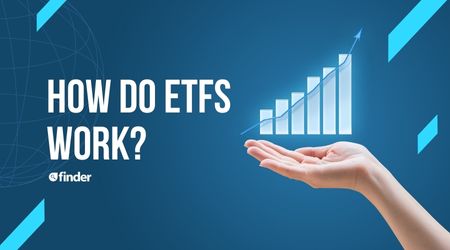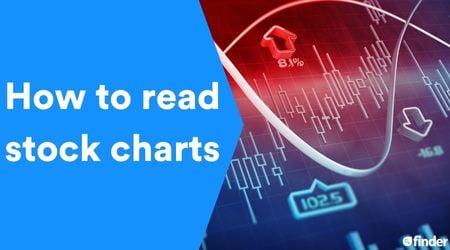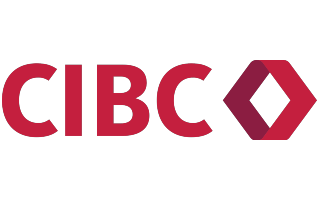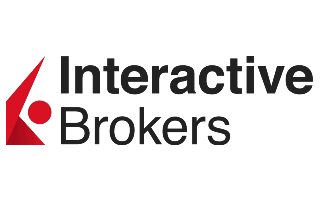Investing in your 40s is all about ramping up your investment goals in preparation for retirement. But even if you’re a little late to the game, there’s plenty you can do to safeguard your finances and start building an investment portfolio to help carry you through retirement.
How to start investing in your 20s: 7 tips for beginners
1. Clarify your financial goals
Let’s face it: things have changed since you were in your 20s. Heck, things are different now than they were a decade ago. An important step to take as an investor in your 40s is to clarify your financial goals. Whether you do this alone or with a partner, friend, family member or financial adviser, take some time to lay it all out.
Review your income, expenses, savings, investments — you name it. You want to get a holistic picture of your finances to reassess your goals accurately and inform your retirement plan. As tempting as it may be to leave your finances on autopilot, it’s crucial to stay flexible and adaptive as your life circumstances evolve.
2. Build a detailed retirement plan
If you haven’t begun work on your retirement plan, don’t panic. You still have plenty of options to start planning your retirement. As you begin to budget for retired life, consider the following:
- Timeline. Much of your retirement plan hinges on when you plan to retire. The transition to early retirement could take place in your late 50s — others wait until over the age of 70 to truly call it quits. Consider when you’d ideally like to retire and work backward to determine how many years you have to plan and save.
- Lifestyle. While some look forward to spending their retirement with friends and family, others aspire to travel and whittle down their bucket list with high-flying adventures. Aim to budget for at least 80% of your current spending habits in retirement — more if you plan to busy yourself with travel.
- Expenses. Anticipated expenses are one thing: emergency expenses are another. Make sure you account for both when plotting your retirement fund.
- Inflation. If compound interest is an investor’s best friend, the growing inflation rate is undoubtedly an enemy. Factor cost of living increases into your retirement investing strategy.
- Taxes. Getting taxed on your investments is never pleasant, but it’s possible to get strategic about where and when you take on the burden of paying tax. While a true tax-free investment doesn’t exist, tax-advantaged retirement accounts, like RRSPs or TFSAs, are a practical way to control how your investments are taxed.
- Estate planning. While it may be uncomfortable to contemplate, ensuring your estate is in order is an important part of preparing for retirement. Sit down with your loved ones or financial adviser to devise a strategy for your assets and accounts after you die.
How much do I need to retire?
Generally speaking, most retirees need about 80% of their pre-retirement salary annually to live comfortably. So, if you make $60,000 per year before retirement, anticipate budgeting $48,000 per year once you retire.
Once you’ve got your ideal retirement income in mind, you can use the 4% rule to determine how big of a nest egg you’ll need to build. The 4% rule is typically considered to be a safe withdrawal rate for retirement — although some financial advisers argue that the rule is outdated and doesn’t account for major market upheavals, economic crises or fluctuations in withdrawal rates.
That said, the 4% rule can give you a general idea of how much you’ll need to save for retirement. You simply divide your ideal retirement income by 4% to arrive at the amount you’ll need to save.
| Annual retirement income | Nest egg |
|---|---|
$40,000 | $1 million |
$50,000 | $1.25 million |
$60,000 | $1.5 million |
$80,000 | $2 million |
If you’re still unsure how much you need to retire comfortably, rely on a retirement calculator to help you set some nest egg milestones. Consider a new brokerage account if you need to expand your investing.
3. Maximize your RRSP contributions
By the time you hit your 40s, you’ve probably cycled through your fair share of jobs, from part-time gigs as a 20-year-old to full-time roles across various employers. Regardless of your employment history, there’s a chance you have a couple of old RRSPs kicking around.
If that’s the case, you’ll want to read up on rolling over unused RRSP contribution room from prior years. Everyone has a maximum yearly contribution amount, but if you don’t use the full amount, it will roll over to the following year. Your contribution room never expires. You could be sitting on the opportunity to save thousands of tax-deferred dollars beyond what you normally contribute.
Check your most recent Notice of Assessment to see what your total contribution limit is for the current tax year (this figure includes rolled over amounts from previous years).
4. Rebalance your portfolio
Your investment portfolio should be anything but static. Instead, it should act as a direct reflection of your ongoing financial goals; flexible and adaptive in the face of major life events. Even passive investors investing with a human or robo-advisor can’t afford to set it and forget — not in the long run, at least.
It’s crucial to revisit your investment accounts on a routine basis. The asset allocation strategy of a 20-year-old investor will look different than that of a 40-year-old. The longer your time horizon, the more risk you can afford to take. That said, you don’t want to pull out of all your high-growth stocks in favor of safer, more conservative investments, like bonds.
Maximizing your returns as you move closer to retirement is a delicate balancing act. And the ideal balance ultimately comes down to your risk tolerance and individual investment goals. But if you’re looking for a ballpark range, advisers suggest investors in their 40s should aim for 70% high growth assets, like stocks, and 30% conservative assets, like bonds.
Compare stock trading platforms
Finder Score for stock trading platforms
To make comparing even easier we came up with the Finder Score. Trading costs, account fees and features across 10+ stock trading platforms and apps are all weighted and scaled to produce a score out of 10. The higher the score the better the platform - simple.
5. Prioritize high-interest debt
Debt doesn’t need to be a four-letter word — at least not the type you’re thinking of. Debt tends to get a bad rap, but carrying debt is incredibly common. And so long as you carry it responsibly, there’s little need to panic.
Consider prioritizing high-interest debt, like credit card debt, over low-interest or tax-deductible debt, like your mortgage. And if you find yourself facing down multiple debt streams and feel overwhelmed, explore the debt avalanche and debt snowball methods. Both are designed to help you create an actionable game plan for multiple debts.
6. Explore alternative investments
Diversification remains a core ingredient of any healthy portfolio. As you enter your peak earning years and prepare for retirement, consider branching out into alternative investment classes.
- RESP. If you have children, consider a Registered Education Savings Plans (RESP), a tax-advantaged account that can be used to cover qualifying education expenses later in life. Plus, funds in an RESP can grow tax-free; you only pay income tax when the funds are withdrawn.
- GICs. Guaranteed investment certificates offer consistent interest rates over set terms — typically 30 days to 5 years. You’ll find the most competitive GIC rates accompany the longest terms and most GICs have minimum deposits of $500 or more.
- Real estate. An investment in real estate can take many forms, from mutual funds and REITs to purchasing property outright and becoming a landlord.
7. Consider a financial adviser
If actively managing your investments has become overwhelming, don’t be afraid to ask for help. Investors in their 40s often have a rich and diverse financial history. And if wrangling up accounts, calculating retirement expenses and navigating the obstacle course that is tax-advantaged investing has become altogether too much, it may be time to consider a financial adviser.
Financial advisers can assist with investments, retirement savings, estate planning and more. In Canada, investment advisers must be registered at the national and provincial levels.
They must be registered under the Securities Commission in the province in which they intend to offer services. This involves training and passing specific exams. The must also pass the Canadian Securities Course (CSC) exam administered by the Canadian Securities Institute (CSI), which provides courses and examinations for the Investment Industry Regulatory Organization of Canada (IIROC).
Financial advisers can be hired through banks and wealth investment firms, like National Bank, RBC Dominion Securities and Edward Jones. Many advisers charge for their services using an annual asset management fee that typically ranges from 1% to 2% of your total account balance. For portfolio worth $1 million or more, the fee may fall below 1%.
And if you’re looking for investment guidance, a human isn’t your only option: robo-advisors are algorithm-driven digital services that manage your portfolio on your behalf, making automatic adjustments based on your investment preferences.
How to find the best financial advisors in Canada
8. Monitor your investments
Keep track of your portfolio’s performance by regularly reviewing your investments. Hands-off investors who leave their portfolios with human or robo-advisors may only need to check in once per quarter. Active investors — especially those with volatile, high-growth stocks — may want to check in more often.
Ultimately, the frequency with which you revisit your portfolio will depend on your trading strategy. But be careful not to over-monitor your accounts. Financial experts warn that too-frequent checking often lends itself to loss-inducing trades.
Bottom line
Investing in your 40s is all about staying organized and adaptive. Consolidate your investments, revisit your asset allocation strategy and don’t be afraid to branch out into new investment classes. Review your investment options across multiple platforms and assets to keep your portfolio — and returns — on an upward trajectory.
More on investing

What are the best stocks for beginners with little money to invest?
Want to dive into investing but don’t have much to spend? Take a look at these types of stocks.
Read more…
Meme stocks: What they are and examples of popular stocks
Meme stocks can produce large gains in short periods, but the stocks are volatile.
Read more…
How do ETFs work?
Your guide to how ETFs work and whether this type of investment is right for you.
Read more…
How to read stock charts
Learning how to read stock charts and recognize chart patterns can unlock your success as a trader.
Read more…
What are stocks?
Owning a stock means you own part of a company and can potentially grow your wealth. But there is a risk of loss.
Read more…
How to analyze a stock
Learn how to research stocks and find the right investment opportunities in 4 steps.
Read more…More guides on Finder
-
How to trade futures
Futures trading can be rewarding, but it’s not for everyone. Learn the steps to trade futures, including examples and fees to consider.
-
Investment calculator
Use this calculator to find out how much you can grow your money.
-
6 places to find investment advice
Tips for beginning investors and high net-worth individuals alike.
-
Retirement planning
Get actionable tips on how to prepare for your ideal retirement.
-
Investing in your 30s: 8 wealth-building tips
Prepare to revamp your asset allocation and explore new investment classes when you’re in your 30s.
-
How to start investing in your 20s: The 7 tips for beginners
Read our 7 tips for starting a portfolio if you’re new to investing.
-
Real estate investment
Check out these real estate investment options from REITs and rentals to mutual funds, house flipping and more.
-
Questwealth Portfolios vs Wealthsimple: Which robo-advisor is right for you?
Find out which of these popular Canadian robo-advisors you should choose to for your financial situation.
-
What are bonds?
Bonds are fixed-income assets that earn interest. But bonds may underperform other asset classes in the long run.




